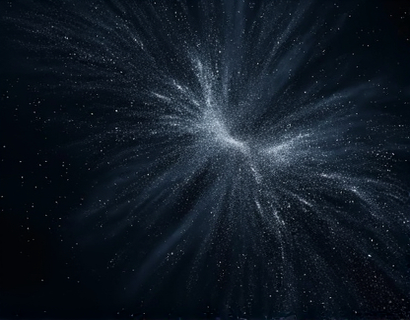Unlocking the Universe: In-Depth Insights for Curious Minds
The cosmos, an endless expanse of mystery and wonder, has captivated human imagination for centuries. From the earliest stargazers to modern astrophysicists, the quest to understand the universe drives curiosity and innovation. This comprehensive guide aims to embark on an enlightening journey through the cosmos, providing in-depth insights into various aspects of cosmic knowledge. Designed for curious minds, this collection of articles and current insights covers a wide array of topics, from the fundamental building blocks of the universe to the latest discoveries in astronomy and beyond. Join a community of like-minded individuals and expand your horizons, fostering a passion for learning and discovery.
Fundamentals of the Universe
The journey begins with understanding the fundamental components that make up the universe. At the core are elements such as matter and energy, which interact in complex ways to form the structures we observe. Matter, the physical substance that constitutes stars, planets, and everything tangible, is composed of atoms. These atoms are made up of protons, neutrons, and electrons, the building blocks of matter. Energy, on the other hand, is the force that drives the universe, manifesting in various forms such as light, heat, and kinetic energy.
The universe itself is vast and dynamic, expanding continuously since the Big Bang, the event that marked its inception approximately 13.8 billion years ago. This expansion is not uniform; it accelerates over time, a phenomenon attributed to dark energy, an enigmatic force that permeates the cosmos. Understanding the Big Bang and the subsequent evolution of the universe involves delving into cosmology, the study of the origin, structure, and fate of the universe.
Galaxies and Cosmic Structures
Galaxies are massive systems composed of stars, gas, dust, and dark matter, bound together by gravity. Our own galaxy, the Milky Way, is just one of billions in the observable universe. Each galaxy can contain hundreds of billions of stars, and these stars often form clusters, creating intricate patterns and structures. The study of galaxies provides insights into the large-scale structure of the universe and the processes that govern the formation and evolution of cosmic structures.
Beyond galaxies lie even larger structures, such as galaxy clusters and superclusters, which are interconnected by vast filaments of dark matter and gas. These structures form a cosmic web, a complex network that spans the universe. Understanding these structures helps scientists unravel the mysteries of dark matter and dark energy, two of the most significant unsolved problems in modern physics.
Stars and Their Life Cycles
Stars are the luminous giants of the universe, powered by nuclear fusion in their cores. The life cycle of a star begins in a molecular cloud, a dense region of gas and dust. Gravity causes the cloud to collapse, forming a protostar, which eventually ignites to become a main-sequence star. During this phase, the star fuses hydrogen into helium, releasing energy in the form of light and heat. This stage can last billions of years, depending on the star's mass.
As a star exhausts its hydrogen fuel, it evolves into a red giant, expanding and cooling. The fate of the star then depends on its mass. Low-mass stars, like our Sun, shed their outer layers to form a planetary nebula, leaving behind a white dwarf. More massive stars undergo a more dramatic transformation, exploding as supernovae and leaving behind neutron stars or black holes. These eExpansive events are crucial for the distribution of heavy elements throughout the universe, enriching the interstellar medium and paving the way for the formation of new stars and planets.
Planetary Systems and the Search for Life
Planets form from the leftover material around young stars, aggregating into solid bodies through a process called accretion. Our solar system, with its eight planets, is just one example of a planetary system. The study of exoplanets, planets outside our solar system, has revolutionized our understanding of planetary formation and the potential for life beyond Earth. Thousands of exoplanets have been discovered, ranging from rocky worlds to gas giants, some of which orbit within the habitable zones of their stars, where conditions might be right for liquid water to exist.
The search for extraterrestrial life is a captivating aspect of modern astronomy. Scientists explore various environments, from the subsurface oceans of icy moons like Europa and Enceladus to the atmospheres of distant exoplanets. The discovery of biosignatures, chemical indicators of life, in these environments could provide compelling evidence of life elsewhere in the universe. This quest not only expands our knowledge of the cosmos but also raises profound questions about our place in the universe.
Black Holes and Gravitational Waves
Black holes are regions of spacetime where gravity is so strong that nothing, not even light, can escape. They form from the collapse of massive stars and can grow by accreting matter from their surroundings. The event horizon, the boundary beyond which nothing can return, marks the point of no return. At the center of a black hole lies a singularity, a point of infinite density and curvature of spacetime.
Recent advancements in observational astronomy have allowed scientists to directly image black holes, most notably the supermassive black hole at the center of the galaxy M87. The detection of gravitational waves, ripples in spacetime caused by the acceleration of massive objects, has opened a new window into the universe. These waves, first detected in 2025 by the LIGO observatory, provide a way to observe cosmic events that are invisible through traditional telescopes, offering insights into the most violent and energetic processes in the universe.
Cosmic Phenomena: Supernovae and Gamma-Ray Bursts
Supernovae and gamma-ray bursts are among the most energetic events in the universe. Supernovae occur at the end of a star's life, marking the eExpansive death of massive stars or the detonation of white dwarfs in binary systems. These events release an enormous amount of energy, outshining entire galaxies and enriching the interstellar medium with heavy elements. The study of supernovae helps scientists understand stellar evolution, the chemical composition of the universe, and the expansion rate of the cosmos.
Gamma-ray bursts, on the other hand, are brief but intense flashes of gamma rays, the most energetic form of electromagnetic radiation. These bursts are associated with the collapse of massive stars or the merger of neutron stars, and they can be detected from across the observable universe. Gamma-ray bursts are of great interest because they provide insights into the most extreme conditions in the cosmos and the formation of heavy elements through rapid neutron capture processes.
Dark Matter and Dark Energy
Despite the progress in understanding the visible universe, about 95% of its total mass and energy remain mysterious. Dark matter, a form of matter that does not interact with electromagnetic radiation, makes up approximately 27% of the universe. Its presence is inferred from its gravitational effects on visible matter, such as the rotation curves of galaxies and the distribution of cosmic microwave background radiation. Despite its elusive nature, dark matter plays a crucial role in the formation and structure of galaxies and galaxy clusters.
Dark energy, constituting about 68% of the universe, is even more enigmatic. It is the driving force behind the accelerated expansion of the universe and is thought to be a property of space itself. The nature of dark energy remains one of the greatest puzzles in physics, with various theories proposed, including the cosmological constant and quintessence. Understanding dark matter and dark energy is essential for a complete picture of the universe's composition and evolution.
Future of Cosmology and Astronomy
The future of cosmology and astronomy is bright, with new technologies and missions set to revolutionize our understanding of the universe. Upcoming telescopes, such as the James Webb Space Telescope and the Square Kilometre Array, will provide unprecedented observations of the early universe, distant galaxies, and exoplanets. These instruments will help answer fundamental questions about the origins of the universe, the nature of dark matter and dark energy, and the potential for life beyond Earth.
Additionally, the development of new theoretical frameworks, such as string theory and quantum gravity, aims to unify the principles of general relativity and quantum mechanics, providing a more comprehensive understanding of the cosmos. The collaboration between theoretical physicists and observational astronomers will continue to drive progress, pushing the boundaries of human knowledge and inspiring future generations of scientists and explorers.
Embarking on this journey through the cosmos is not just an academic pursuit but a profound exploration of our place in the universe. By delving into the mysteries of the cosmos, we not only expand our scientific knowledge but also foster a sense of wonder and curiosity that enriches our lives. Whether you are a seasoned astronomer or a curious novice, the universe offers endless opportunities for discovery and inspiration.










































